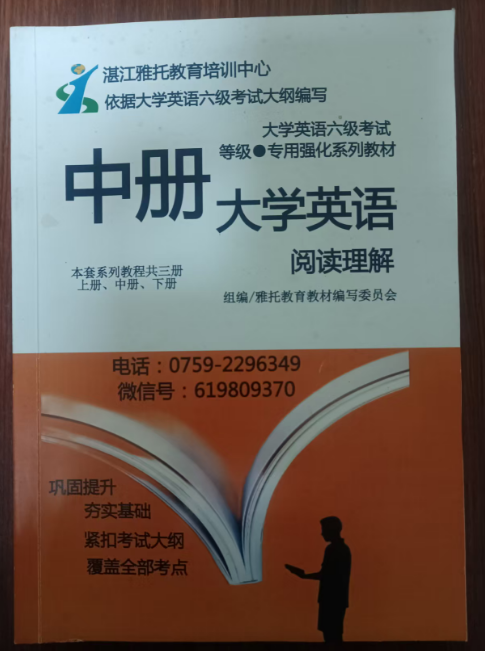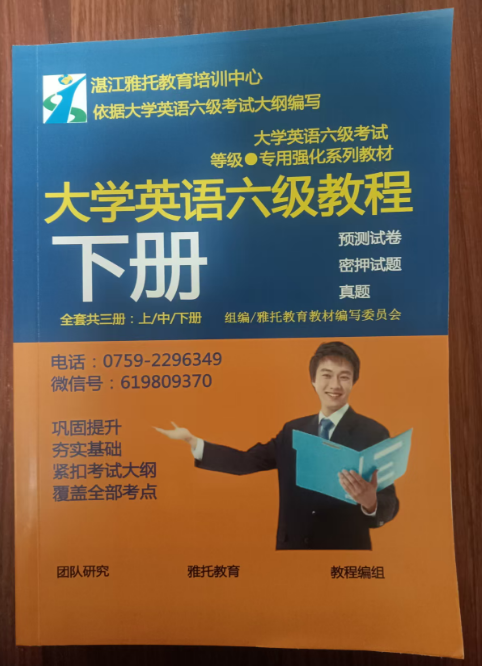翻译练习-大学英语六级

Directions: For this part, you are allowed 30 minutes to translate a passage from Chinese into English. You should write your answer on Answer Sheet 2.
牡丹花色艳丽,形象高雅,象征着和平与繁荣,因而在中国被称为“花中之王”。中国许多地方都培育和种植牡丹。千百年来,创造了许多诗歌和绘画赞美牡丹。唐代时期,牡丹在皇家园林普遍种植并被誉为国花,因而特别风行。十世纪时,洛阳古城成为牡丹栽培中心,而且这一地位一直保持到今天。现在,成千上万的国内游客蜂拥到洛阳参加一年一度的牡丹节,欣赏洛阳牡丹独特之美,同时探索九朝古都的历史。
翻译范文
The peony, boasting bright colors and an elegant appearance, is a symbol of peace and prosperity and thus recognized as“king of the flowers”in China. Peonies are bred and grown in many parts of the country. Over the centuries, numerous poems and paintings have been created to praise the flower. Peonies were particularly popular during the Tang Dynasty, when they were extensively cultivated in the imperial gardens and praised as the national flower. In the tenth century, the ancient city of Luoyang became the center for peony cultivation, a position it still holds today. Nowadays, thousands of tourists from home and abroad flock to Luoyang for the annual Peony Festival to both admire the unique beauty of the city’s peonies and explore the history of the ancient capital of nine dynasties.
解析
1. 第一句的四小句分别描述牡丹的颜色 、外观 、象征意义 、地位;前两者是事实细节(常为次要信息) ,后两者是评价内容(常为主要信息) 。 次要信息可译为主语“牡丹”的修饰成分(要与主干以逗号隔开) ,译法有二 : 可采用“with+名词短语”结构译作 with bright colors and an elegant appearance,也可将“牡丹”与 “颜色/外观 ”之间隐含的谓语“拥有”以分词的形式译出 boasting bright colors and an elegant appearance,boast意为“有(值得自 豪的东西) ”。主要信息译为主干 , 两个谓语动词“象征着……”和 “被称为……”通过“因而”相连 ,整体既可译为 so(连词) 连接的两个分句 ,也可译为“谓语 1+and+therefore/thus(副词) +谓语 2”的并列谓语结构 。
2. 第 二 句 为汉语无主句 ,翻译时可译为被动句 ,将 “牡丹 ”前置译为主语 , “培育和种植 ”以被动形式译出 , “中国许多地方 ”后置译为地点状语 ,其中 “中国 ”一词在上句 出现过 , 为避免重复以 the country回指 。
3. 第 三 句 “创作了许多诗歌和绘画 ”同样为汉语无主句 ,也可译为被动句 , “了 ”提示 “创造 ”这一动作 已完成 , 因此时 态 应 为 现 在 完 成 时 。“赞 美 牡 丹 ”既 可 理 解 为 “创 作 ”的 目 的 , 译 为 (. . . poems and paintings have been created) to praise the flower;也可理解为 “诗歌和绘画 ”的 内容 ,译为(. . . poems and paintings) in praise of the flower (have been created) , 为避免重复以 the flower指代 “牡丹 ”。
4. 第 四 句两小句借关联词“因而”连接 ,前为因 ,后为果 ,可将原因小句译为主干 ,结果小句译为结果状语 , 即peonies were extensively cultivated. . . , thereby being particularly popular;也可把结果小句译为主干 ,将 “唐代时期”译在主干句末 ,原因小句则译为“唐代时期”的非限制性定语从句补充该时期的具体事实 , 间接说明主干的背景原因 , 即 Peonies were particularly popular during the Tang Dynasty, when they were extensively cultivated. . . 。时间词“唐代时期”提示译句要用一般过去时 。
5. 第五句含有两个小句 , 小句 1描述十世纪情形 , 小句 2描述如今情形 ,翻译时要区分时态 。 小句 1 表语“牡丹栽培中心 ”与 小句 2 主语 “这一地位 ”所指相同 ,故可把小句 1译为主干 , 小句 2译为主干表语“牡丹栽培中心”的 同位语 a position it still holds today(其中 its till holds today为 position的定语从句 ,it指代“洛阳古城”) 。
6. 第 六 句含有四 个动词短语 “蜂拥到…… ”、“参加…… ”、“欣赏…… ”、“探索…… ”, 其中前者与后三者构成 “行为 — 目 的 ”逻辑 。故保留第一个动词短语作谓语;后三个动词短语可用多样化结构表示 目 的 , 第 二 个动词短语可用介词 for(表 目 的 ,去向) 译为 for the annual Peony Festival;后两个动词短语之间靠“同时 ”连接 ,可并列译为不定式短语作 目 的状语 to both admire. . . and explore. . . 。













